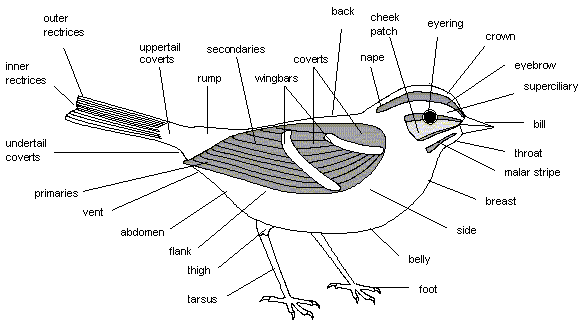Tips for Taking Field Notes Professional and amateur scientists routinely take notes on their observations and experiments. Because the documentation of natural history information is important, birders should learn to take good field notes. Note keeping may enhance the skills of birders by forcing you to more carefully scrutinise a bird, helping you identify an unfamiliar bird, serving as a reference for your observations, and providing scientists with valuable information. Note keeping should begin by recording the date and location at the top of a page. Notes may include data on the species observed, number of individuals for each species, plumages, behaviours, natural history observations (e.g., nests, habitat, etc.) and descriptions of rare or unusual birds. Birders who observe rare birds should document their sightings by photographs, if possible. Rare birds may also be documented by collecting for preparation as museum specimens or by tape recording their vocalisations, but this is rarely accomplished. In the absence of physical documentation, a thorough written description--taken in the field, not from a field guide--will often suffice to convince the experts. As detailed a description as possible should be written while observing the bird or as soon as possible afterward, and always before consulting a field guide. A good description should begin with the size and shape of the bird, and proceed to the colours or patterns of its soft parts (bill, eyes, legs), upperparts and underparts, preferably from the head to the tail. A crude drawing with colour or pattern labels is recommended (see Fig. 1 for the body parts of a bird). Information regarding viewing conditions should also be noted, including the date and time of the observation, the weather and light conditions, the distance from birds and optical aids used, other species present for comparison, and other observers present. Descriptions should be written as candidly and honestly as possible (see Fig. 2 for an example). After writing the description, discrepancies between what was observed and what appears in a field guide (birds often vary somewhat from illustrations) could be added to the description. Observations of rare birds should be promptly reported to fellow birders and to the Southeastern Caribbean Bird Alert so that others may have the opportunity to observe and document the birds' presence. Furthermore, the details of rare birds should be submitted to the appropriate authorities and to the Trinidad and Tobago Rare Bird Committee for evaluation, preferably on the recommended Rare Bird Report Form. Keep in mind that an observer's reputation is an important factor. A healthy dose of honesty and humility helps. Selected References Dittmann, D. L., and G. W. Lasley. 1992. How to document rare birds. Birding 24:145-159. http://www.losbird.org/dittman_lasley.htm, Patterson, M. 1997. How to write convincing details. http://home.pacifier.com/~mpatters/details/details.html Remsen, J. V., Jr. 1977. On taking field notes. American Birds 31:946-953. Wilds, C. 1985. On taking a notebook afield. Audubon Naturalist News October:15. http://www.mdbirds.org/mddcrc/notebook.html Wilds, C., and R. Hilton. 1992. Emerging from the silent majority: documenting rarities. Maryland Birdlife 48:30-??. http://www.mdbirds.org/mddcrc/rarities.html
Fig. 1. Commonly used terms for the body parts of a bird.
Fig. 2. Sample field notes of the first Wood Sandpiper (Tringa
glareola) from Tobago, illustrating description and sketch. Field notes by Floyd
Hayes. |


